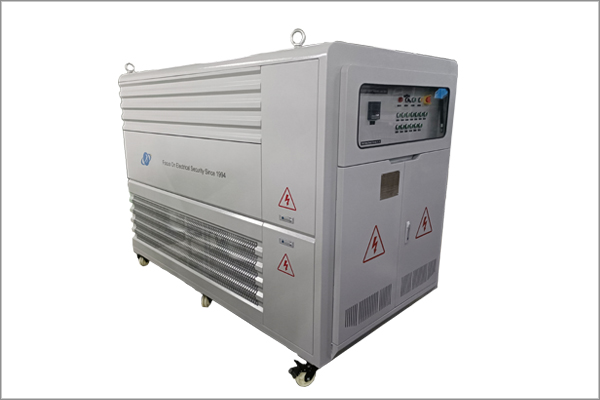Establishing and Optimizing the Load Testing Environment for Marine Generators
Time:2024-07-24
In the operation of ships, the generator serves as the heart of the vessel's electrical system, with its stability and reliability directly impacting the safe operation of the ship and the normal functioning of various functions. Therefore, regular load testing of marine generators is of paramount importance. This article delves into the construction and optimization strategies of the load testing environment for marine generators to ensure the accuracy and validity of test results.
I. Introduction
The load testing of marine generators aims to simulate the power demands of ships under various operating conditions, evaluating the generator's performance under full load, partial load, and sudden load changes. This includes assessing output voltage stability, frequency control, power factor, temperature rise, and fault protection mechanisms. A scientific and reasonable testing environment is crucial to the success of the test.
II. Key Elements of Establishing the Testing Environment
1. Selection of Testing Site
Safety: The testing site should be located away from flammable and explosive materials, with good ventilation to prevent the accumulation of heat and exhaust gases generated during generator operation.
Stability: The ground should be flat and solid to reduce the impact of generator vibrations on test results.
Spatial Layout: Plan the testing area rationally to ensure sufficient space for equipment installation, operation, and safety distances.
2. Configuration of Testing Equipment
Load Banks: Configure load banks based on the generator's rated power, capable of simulating various load conditions, including resistive, inductive, capacitive loads, and their combinations.
Measurement Instruments: Include high-precision voltmeters, ammeters, power analyzers, temperature monitors, etc., for real-time monitoring and recording of the generator's operating parameters.
Control System: Equip with an advanced automation control system capable of precisely controlling load switching, achieving automation and intelligence in the testing process.
3. Safety Precautions
Emergency Stop Devices: Install conspicuous emergency stop buttons in the testing area to ensure quick power cut-off in case of emergencies.
Fire-fighting Equipment: Provide sufficient fire-fighting equipment, such as fire extinguishers and fire sand, and conduct regular maintenance and inspections.
Personnel Training: All personnel involved in the test must receive professional training, familiarizing themselves with test procedures, safety operating rules, and emergency response measures.
III. Optimization Strategies for the Testing Environment
1. Control of Environmental Parameters
Temperature and Humidity: Use air conditioning or dehumidification equipment to control the temperature and humidity of the testing environment, reducing the impact of environmental factors on generator performance.
Electromagnetic Interference: Implement shielding measures to reduce external electromagnetic interference, ensuring the accuracy of measurement data.
2. Enhancing Load Simulation Accuracy
Dynamic Load Simulation: Introduce dynamic load simulation technology to more realistically mimic load changes in actual ship operations, improving the practicality and reliability of testing.
Balanced Load Distribution: Design a reasonable load distribution plan to ensure balanced loads across phases, avoiding single-phase overload or underload.
3. Data Recording and Analysis
Real-time Data Collection: Utilize a high-speed data acquisition system to record the generator's operating parameters in real-time, ensuring data integrity and accuracy.
Data Analysis Software: Employ specialized data analysis software to process and analyze the collected data, extracting key performance indicators to inform generator maintenance and improvements.
IV. Conclusion
The construction and optimization of the load testing environment for marine generators is a systematic project requiring comprehensive consideration of site selection, equipment configuration, safety precautions, and environmental parameter control. By implementing scientific and reasonable testing environment construction and continuous optimization strategies, we can ensure the accuracy and validity of generator load testing, providing robust support for the safe operation of ships.
News Recommendation
-
 2024-09-11
2024-09-11TRIUMPH LOAD EXHIBITING AT Enlit Europe 2024 -BOOTH 7.H08
-
 2023-04-21
2023-04-21TRIUMPH LOAD EXHIBITING AT DATA CENTER WORLD GERMANY 2023-BOOTH F909
-
 2023-04-06
2023-04-06TRIUMPH LOAD EXHIBITING AT ELECTRIC POWER TECH KOREA 2023 – Booth G109
-
 2022-05-05
2022-05-05What is the role of ac load bank for power supply?
-
 2022-05-05
2022-05-05What is the role of the load bank?


